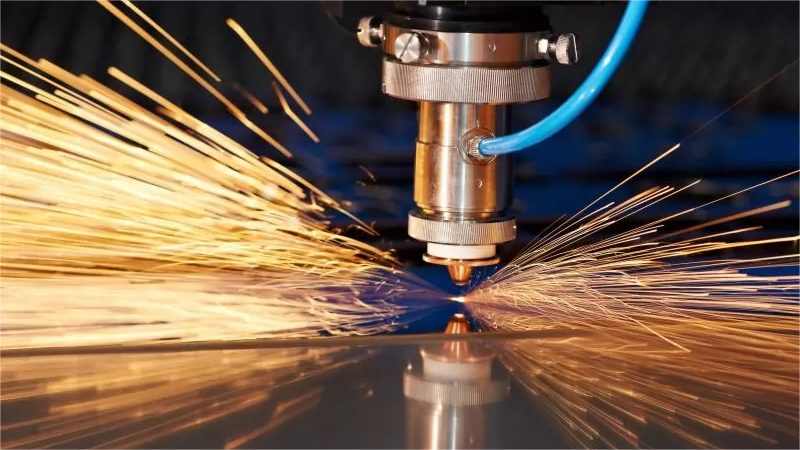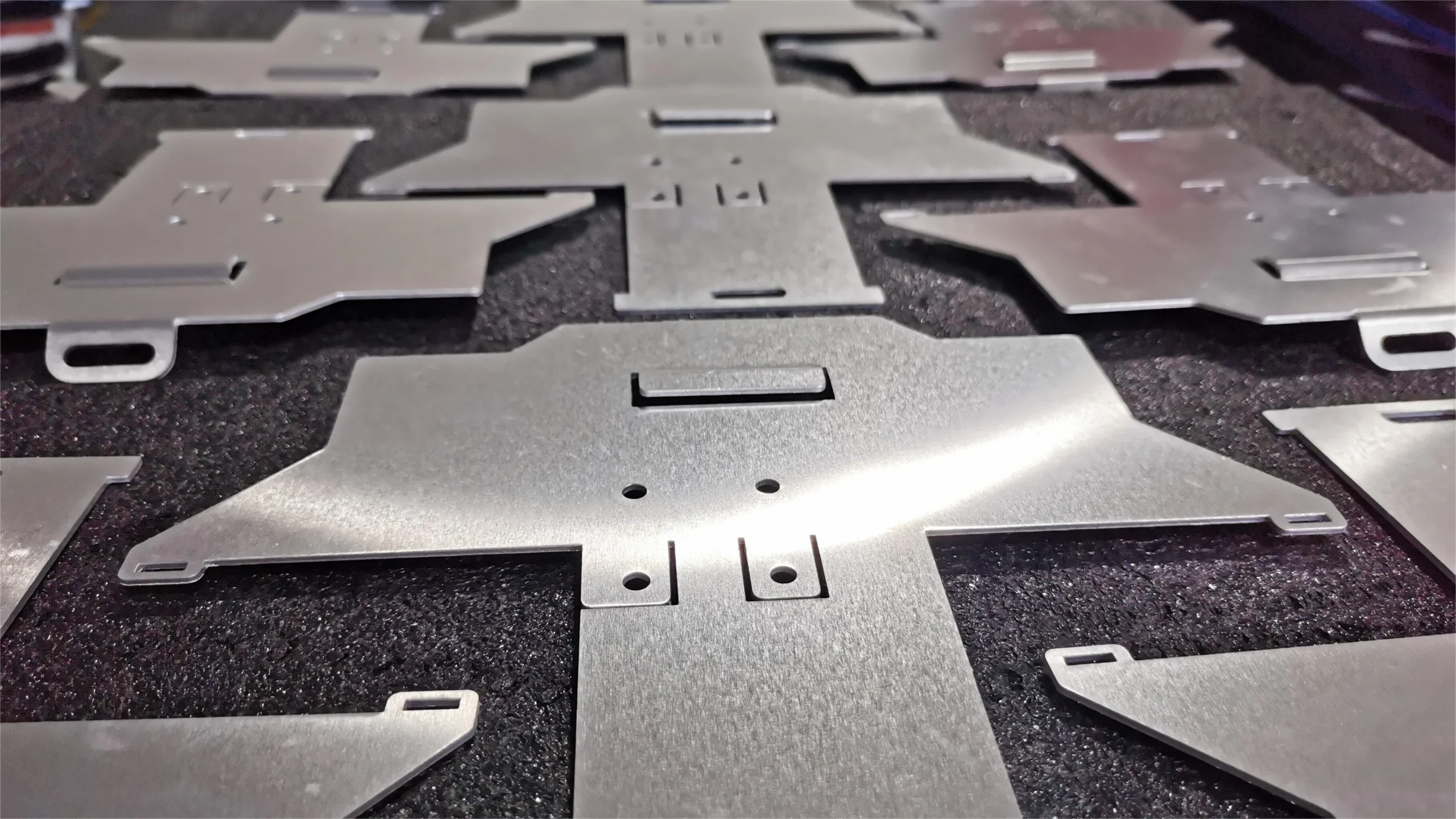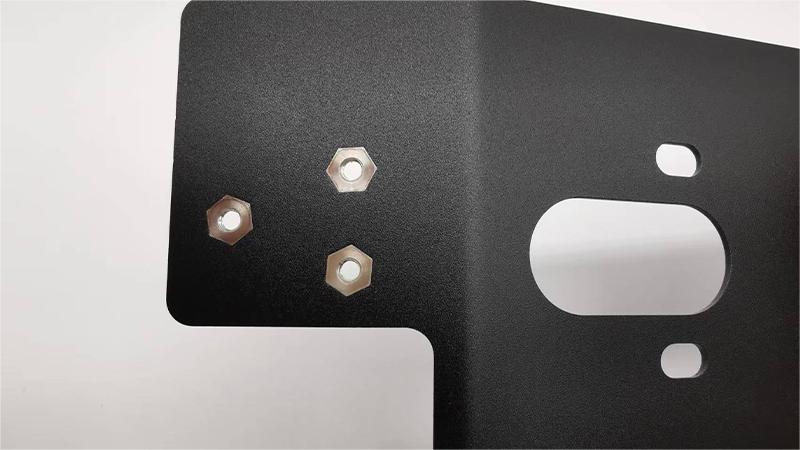Advantages of Laser Cutting in Prototypes
Updated: Apr. 07, 2024
There is no doubt that for the realm of manufacturing, the combination of laser cutting and sheet metal prototyping is a game-changing development, primarily in agility and efficiency.
With the increasing dynamics of the way from the initial design to the final production, being more responsive to changes, iteration, or alteration is vital for prototyping.
The prototyping adaptability of laser cutting. Hence, it is one of the significant assets of the technology.
Moreover, rapid prototyping is no secret.It is an additional argument for laser cutting.
Indeed, the technique can effectively reduce the time needed for workable prototypes.
With the speed and precision of the LASER-targeted cut, laser cutting machines help compress the time needed to produce prototypical models that used to be stretched to weeks.
Much of this time reduction results from the inherent time differences between the preparation of traditional tooling and actual laser cutting.
It allows for significantly shorter lead times and results in projects staying on schedule and reaching markets faster.
Advantages of Laser-Cut Prototypes
Concerning manufacturing, laser cutting is a game-changing technology that the industry cannot simply overlook.
It is exact and efficient, and that high-energy beam can go through materials like metal, plastic, wood, and even glass.
The traits mentioned above make this technology incredibly versatile, but sheet-metal prototyping has become a crucial part of the rapid development cycle in contemporary engineering.

Forms of Laser Cutting
There are primarily three forms of laser cutting, each suited to different materials and applications.
While CO2 lasers are flexible and versatile when dealing with non-metals like wood or plastic, Nd: YAG and Nd: YVO lasers handle thicker, more complex substances through their high-energy beams.
Meanwhile, fiber lasers offer cutting-edge precision through light guided within optical fibers, perfecting even reflective metals and gaining popularity wherever exactness is imperative.
CO2 lasers, utilizing a carbon dioxide mix, dominate for tasks like cutting, boring, and engraving softer stuff.
Their widespread usage shows in industrial and prototype work for non-metals.
Neodymium lasers choose solid-state construction and focus on high-power engraving and slicing of metals, as their tinier wavelengths can tackle thicker items demanded by metal prototyping.
Fiber technology beams a laser through a fiber optic with remarkable efficiency and detail.
Particularly adept with reflective metals’ difficulties, speed and flexibility make fiber lasers increasingly integral to metal sheet prototype manufacturing in industries necessitating nuanced precision.
Benefits of Laser Cutting in Sheet Metal Prototyping
Laser cutting provides companies with an efficient and precise solution for sheet metal prototyping.
Its ability to focus on minute areas allows intricate designs to be cut with sharp edges and tight tolerances.
This level of precision proves invaluable, especially in industries like aerospace, where performance and safety hinge on meticulous fabrication.
Laser cutting is highly accurate and can handle a wide assortment of materials and thicknesses, making it a versatile choice for prototyping varying components across realms as diverse as electronics and transportation.
Speed is another critical advantage – laser cutting significantly hastens the timeline from schematic to prototype.
It facilitates iterative improvements by enabling speedy design refinement.
Cost-effectiveness is yet another benefit. As a computer-guided process requiring minimal human intervention, laser cutting reduces labor expenses related to production, particularly for low-volume test runs.
It also lessens the waste of sheet stock thanks to its precise operation. This efficient use of resources translates to lower overall outlays.
Laser Cutting in the Aerospace Industry
In the aerospace sector, immense precision, efficiency, and reliability are required.
Laser cutting answers these requests by enabling clean, exact cuts crucial for fabricating aerospace elements.
The technology’s capacity to deal with high-strength materials while maintaining tight tolerances renders it indispensable for producing lightweight frameworks and intricate components used in planes and spacecraft.
Moreover, the flexibility to swiftly adapt to design alterations without the necessity for new tooling renders laser cutting an invaluable asset in the fast-paced aerospace industry.
It permits rapid prototyping and testing, speeding up the developmental process and ensuring that new advances can be implemented promptly and productively.
The capability of laser cutting to handle complex geometric shapes at micron-level accuracy has revolutionized the manufacturing of intricate parts.
With no contact needed and highly localized effects, laser processing minimizes heat impact and reduces the risks of damaging delicate components.
Quick Response to Design Changes
Whether fine-tuning intricate geometries or wholesale reconfiguration, designers leverage its fluidity to progress iteratively from vision to validation expeditiously.
Physical prototypes arise near-instantaneously from revised schematics, granting evaluators immediate hands-on experience.
Dimensions alterable with a single keystroke yield continual, hands-on refinement until an errorless end product emerges.
This cursoriness of transforming blueprints into solids lets engineers test progressively and discover flaws early.
Instead of awaiting new dies or forms, they see alterations come to fruition while inspiration remains fresh.
Completed objects embody the latest design decisions without lag, getting productive feedback sooner to drive further progress.
Cost Savings in Short-Run Production
While laser cutting furnishes noteworthy price savings for small-run fabrication, its flexibility also empowers customization.
Traditional mass production methods distribute high fixed costs amongst larger volumes, disproportionately raising the unit price for limited batches.
Conversely, laser technology requires minimal initial investment and setup, rendering even singular samples economically reasonable.
This nimbleness near-serendipitously satisfies fluctuating demands.
With laser cutting, businesses swiftly sculpt prototypes in any quantity dialed to client specifications, whether a lone example or a modest production run.
Such agility allows companies to tailor offerings, resolving unique needs without forfeiting thrift or productivity.
Laser cutting’s reasonable costs and expedited turnaround time make it exceptionally suited to adapting nimbleness as requirements evolve.

How is Laser Cutting Used to Produce Prototype Parts?
Laser fabrication demands the highest degree of exactness, allowing virtually no margin for error.
Even the slightest miscalculation or deviation can lead to prototype flaws and costly delays to production schedules.
However, integrating CAD/CAM into laser cutting processes has dramatically reduced the risk of mistakes.
Designers leverage these programs to craft intensely detailed and precise digital models that laser cutters can faithfully recreate.
The CAD tool furnishes designers with a digital workspace to invent and modify creations seamlessly.
It empowers them to incorporate accurate measurements, refine sketches, inspect different views, and simulate behaviors under various conditions.
This exhaustive level of granularity ensures prototypes accurately reflect their corresponding digital designs with negligible variance.
Once the CAD model is finalized, it can be transferred directly to laser cutters via CAM software.
CAM deciphers the CAD design into instructions that machines follow precisely.
It guides movements, depths, and speeds of cutting.
Unifying CAD/CAM with laser cutting automates the entire production workflow—from concept development to physical prototypes.
With minimal human oversight, designers can generate prototypes more quickly and efficiently once data transfers from CAD to CAM to control machines independently.

Designing Prototypes Tailored to Specific Needs
The development of laser cutting and engraving technologies has created a new approach to prototype production that gave a new meaning to “rapid prototyping.”
Essentially, it is related to the ability of such systems to be tailored to diverse design needs, offering a level of customization, precision, and flexibility that could not be achieved through standard manufacturing techniques.
The influence stems from the customization possibility available through laser systems: designers can now develop parts, products, and models unique to their engineering research and development needs.
Preserving Precision and Detail with Lasers
It is not merely related to matching exact dimensions or other specifics, as it is also the material extension and textural finishing.
Engraving is an additional feature that enables even greater detail in creating a prototype by including, for instance, the needed textual information, such as product application instructions or specific to products received from 3D printing suppliers in China.
Suppliers may incorporate the relevant markers to help assemble the product or fix the units.

Speed is another factor that dominates as a change marker in transitioning to manufacturing laser-based products.
A prototype could previously take weeks and even months to make because Designing may require re-equipment in some cases, or it may need manual labor.
Time and cost
Lasers can produce a physical item within a single working day and often over a few work shifts.
This ease of use leads to multiple benefits, with the straightest one lying in cost reduction.

Manufacturing a prototype usually costs more than utilizing laser cutting and engraving systems at any stage of the process by itself.
The ability of lasers to cut and engrave materials means that they can maintain precision and detail at the level of the final polished product.
Consequently, the prototype looks and behaves at the design level, providing an equally accurate assessment of the final product properties.
Is laser cutting considered rapid prototyping?
Indeed, laser cutting is a prototyping technology that facilitates the swift generation of prototypes and limited parts through its capacity for rapid production.
But what precisely is rapid prototyping?
It encompasses diverse technologies created for economically and promptly constructing physical models or prototypes directly from digital designs.
This iterative process guides unceasing product refinement, permitting constant design tweaks through practical, tangible testing.
Laser Cutting and its Precision in Prototyping
With the power to intricately and accurately cut into a broad assortment of stuff, laser cutting has noticeably figured in prototyping methods, distinctly within the automotive, aerospace, and electronics industries.
It sufficiently equips designers and engineers with the fundamental resources to promptly conceive and fabricate prototypes that can be tested and evaluated.
This hastens both the product development cycle and the journey to market, delivering significant time and cost savings.
Other Rapid Prototyping Technologies
While laser cutting certainly has its merits within rapid prototyping, it is essential to note that it alone does not dominate this arena.
The field encompasses a spectrum of additional technologies, each with its own particular fortes.
For example, three-dimensional printing, computer numerical control machining, and injection molding facilitate the expeditious development of preliminary prototypes.
Every technique touts one-of-a-kind strengths and imperfections, and selecting between them is mainly contingent on the nuances of individual projects.
For instance, three-dimensional printing boasts an almost unrivaled versatility in relation to the intricacy of forms it can fabricate, owing to its additive nature, making it superbly suited for low-volume iterations of sophisticated parts.
On the other flipper, computer numerical control machining excels in material compatibility and often surpasses in delivering high-precision components.
Mass production lends itself well to injection molding as it ensures outstanding uniformity and minimized per-unit pricing but necessitates sizable upfront investment in mold formation.
While indispensable within quick prototyping contexts, the prominence of laser cutting should be balanced.
It constitutes one solution amidst a diversified and congested landscape comprising alternate approaches like three-dimensional printing, computer numerical control machining, and injection molding – each addressing diverse temporal, financial, and specialized demands.
Therefore, the concluding selection should thoroughly appraise an undertaking’s explicit aims, timelines, budgetary allowances, and technical constraints.